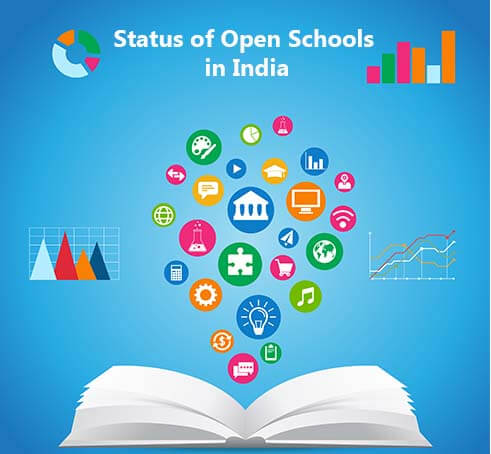The Open Schools in India, such as the National Institute of open schooling, BOSSE, and others, primarily provide open and distance education for secondary and higher secondary levels. An open learning system’s usual characteristics include courseware, instructional methodologies, resources, modes of communication, support systems, admission, exam, and certification processes. One of the concerns that prompted the establishment of Open Schools in India was the desire to provide secondary and senior secondary education to those who were unable to attend traditional schools due to a variety of socioeconomic factors, as well as those who had missed out on opportunities to complete their schooling and developmental education. Gradually, the open school system, with its inherent flexibility in terms of topic choice, study location, and pace, as well as the paradigm shift from “you learn what we offer” to “we offer what you want to learn,” has gained traction and achieved the status of a separate educational subsystem. This method emphasizes the move from “education as a once-in-a-lifetime activity” to “education as a lifelong activity.”
Status of Open Schools in India
Open schools in India are playing an important and corrective role in rebalancing the country’s socio-economic fabric. Our billion-strong nation, whose population is its most valuable resource, requires nurturing and care in the form of basic education to improve its quality of life. This necessitates the holistic development of Indian citizens, which can be accomplished by laying strong educational foundations. The need for secondary education has been rising as the focus on universal elementary education has shifted. Open School admission in India serve as an alternative medium for students who want to complete school education but are unable to do so due to a variety of factors, including the tight framework of laws and regulations surrounding age, curriculum, and examination. Open and distance learning (ODL) is today desired not only by the disadvantaged and dropouts but also by those who require convenient access to school education. Formal education systems are constrained in terms of extension, accessibility, equity, and cost-effectiveness. As a result, it is unable to meet the needs of a huge number of people who wish to pursue higher education. The fact that NIOS is currently the world’s largest open schooling system is well known.
Reasons to join Open Schools in India
- Inability in managing regular schools
- Gap in education
- Respondent’s health problem
- Flexibility and freedom
- Constraints due to family problems (health, cultural & financial)
- Explore better opportunities in existing employment
- Explore new employment opportunities
- Time constraints due to work
- Lack of availability of schools
- Not interested in studies
- Failure in examination
- Facilitate in own business or self-employment
Role & Responsibilities of Open Schools in India
- Taking steps to develop and grow India’s Open Schooling programme through a strategic plan.
- To develop a necessary action plan for making education equal and inclusive for underrepresented and disadvantaged groups such as the female population, minorities, schools that have failed or dropped out, people who are physically or mentally challenged, and others.
- Surveillance, supervision, and assessment to increase the quality of learning in ODL (Open and Distance Learning), while ensuring comparability with formal education norms and maintaining its unique identity.
- Develop multi-media and multi-channel delivery systems to facilitate effective courseware transactions for courses and programmes.
- Administer exams and issue awards to successful pupils.
- To provide a comprehensive selection of academic and practical courses, as well as continuing education and life-enrichment courses, up to the pre-degree level.
- To create need-based curriculum and self-study materials with an emphasis on skill development for (I) Open Basic Education (OBE), (II) Secondary and Senior Secondary Education, and (III) Vocational Education and Training (VET) Programs
